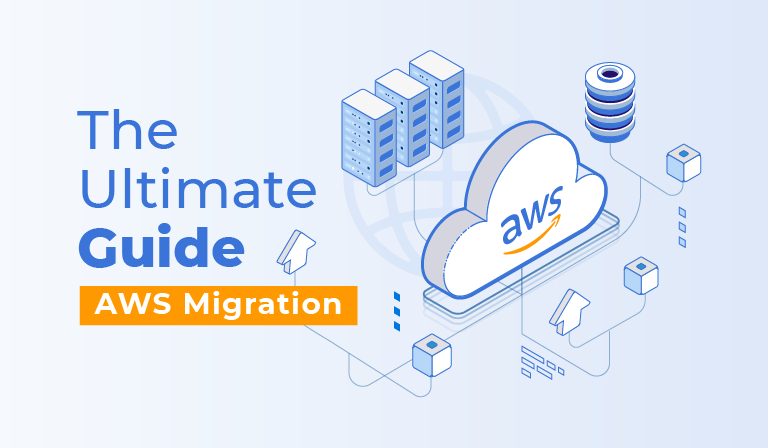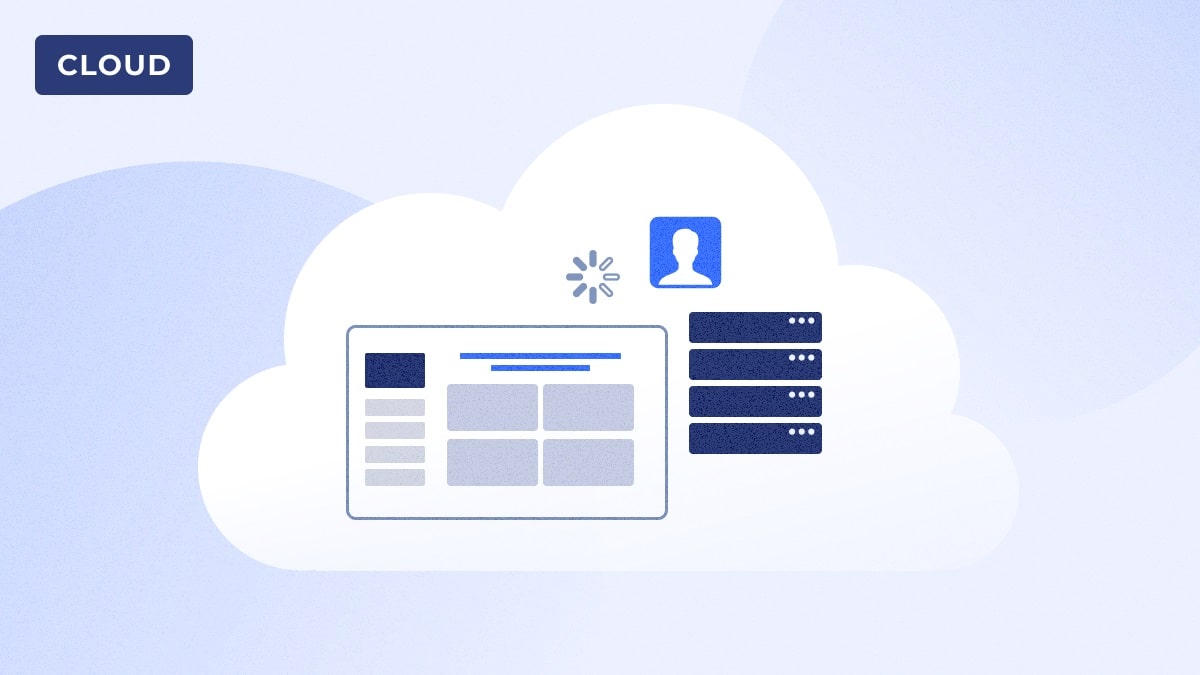Our specialist will contact you shortly
Cloud Migration Services and Solutions
Modernize your software with going cloud
Why is cloud migration important?
Cloud migration is the process of moving your software solution and digital assets to the cloud infrastructure.
This is an important step towards creating a service oriented, robust and scalable business infrastructure allowing organizations across the globe minimize the efforts to support complex infrastructure and focus on the business processes and goals.
Our Approach to Cloud Migration
Discovery phase
Design phase
Migration
Going live
Ongoing support
Determine the migration approach, strategy and KPIs
- Analyze legacy environment, software and digital assets
- Understand the pain points
- Determine success drivers, formulate KPIs
1 month (may vary depending on the scope and complexity)
Migration strategy, preliminary tools and tech stack identification
- To identify target state of the solution
- To create a detailed migration plan
- Identify target architecture
- Select cloud vendor (tips on how to select the best cloud vendor)
- Analyze legacy code for compatibility with the target architecture and plan refactoring / activities, redesign legacy software
- Analyze data model and design potential transformations
- Detailed implementation backlog (software, infrastructure, data transformation, ETL)
1-3 months
- Solution architecture
- Software gaps
- Data transformation approach
- Implementation backlog
Prepare software, infrastructure and data for migration
2-6 months
- Cloud infrastructure setup
- New version of software to be migrated
- ETL tools
- Cutover plan
- Rollback strategy and tools
Production migration with minimal downtime
1 month
Live solution after migration
Minimize risks and costs of the migrated solution
Support tickets, software fixes and patches, software updates
Determine the migration approach, strategy and KPIs
- Analyze legacy environment, software and digital assets
- Understand the pain points
- Determine success drivers, formulate KPIs
1 month (may vary depending on the scope and complexity)
Migration strategy, preliminary tools and tech stack identification
- To identify target state of the solution
- To create a detailed migration plan
- Identify target architecture
- Select cloud vendor (tips on how to select the best cloud vendor)
- Analyze legacy code for compatibility with the target architecture and plan refactoring / activities, redesign legacy software
- Analyze data model and design potential transformations
- Detailed implementation backlog (software, infrastructure, data transformation, ETL)
1-3 months
- Solution architecture
- Software gaps
- Data transformation approach
- Implementation backlog
Prepare software, infrastructure and data for migration
2-6 months
- Cloud infrastructure setup
- New version of software to be migrated
- ETL tools
- Cutover plan
- Rollback strategy and tools
Production migration with minimal downtime
1 month
Live solution after migration
Minimize risks and costs of the migrated solution
Support tickets, software fixes and patches, software updates
Our Cloud Migration Services
Cloud migration assessment and planning
We help customers analyse legacy environment and processes, define goals, KPIs and come up with the best strategy including: target cloud platform, ETL tools, migration approach and high-level migration plan
Cloud migration services
Full scale migration project from analysing existing legacy solutions, identifying tools, platforms, plans to implementing the migration strategy and post Go-live support.
Quality assurance of a migration project
When you are not happy with the existing supplier or project, your KPIs have not achieved or you need a 3d party to assess risks and come up with a mitigation plan, we’ll pull our best architects and Cloud experts to support ensure your successful Cloud migration.
Cloud infrastructure management and automation
We help clients set up and tune Cloud application management tools and technologies, by AWS, Azure, Google Cloud Platform and other vendors. By leveraging our proprietary technologies (SaM Solutions Rolling Stack) you can avoid a vendor lock and simplify Development and Operations of your Cloud software.
Cloud Consulting Services
Get a better understanding of your cloud migration options based on the expert opinion of our cloud architects and experienced lead engineers. Make sure you start executing on your cloud migration plan with a clear roadmap for what lies ahead.
Cloud Engineering Services
Take advantage of our multi-year experience working with the most popular cloud platforms and building scalable cloud applications. Leverage a multitude of existing services from leading cloud service providers to start saving from the get-go.
Cloud Optimization Services
Let SaM Solutions experts take a deep dive into your current cloud infrastructure and produce a detailed, step-by-step plan for streamlining storage and compute resource consumption. Pay exactly for what you use and not a dollar more.
AWS Cloud Services
Utilize the immense potential of AWS cloud services to the fullest with the help of our cloud architects and experienced development leads. Reduce the time to market by invoking the most powerful platform offerings and putting them to the best use possible.
Azure Cloud Services
Take the fast lane to your business goals using the incredible potential of Microsoft Azure services ranging from the most basic cloud deployments to ultra-complex systems relying on advanced AI tech and industry-specific solutions. Our engineers will be your guides through the maze of Azure services and will suggest the best strategy for achieving your goals.
Ready to Migrate to Cloud?
talk to an expert4 Methods for effective cloud migration process
Moving the entire legacy app to the cloud infrastructure
Refactoring the legacy code to be cloud compliant and robust
Building a new cloud native application and migration of data and processes
Re-platforming or moving from one cloud platform to another
Cloud Migration Plan
Regardless of the approach a company uses, the migration plan would consist of the same 7 steps
Analyze/plan
Step includes creation of the backlog for migration project, describing tasks, their interdependencies, providing estimates and planning for the big picture implementation.
Select
Step includes selection of the tasks for the release candidate, assigning them to the teams.
Prepare
The team analyzes the tasks, designs the resulting feature/process, implements needed changes and applies them to the dev environment.
Migrate
Code and data migration is tested in Quality Assurance environment, cutover plan is created for the release.
Test/Verify
User Acceptance Testing is performed in Production-like environment using production or masked production data. Regression testing is performed to assure that the target solution would not be broken by the releasing features.
Operations and optimization
Ongoing support of your software in the cloud requires regular checks, system logs, cloud settings, backup, security, and data archiving.
Continuous Improvement
Includes all patches and fixes to the migration tools and code, as well as new automation scripts, patterns, and approaches.
Cloud Migration Checklist
Use our checklist to successfully manage your cloud migration processes
Platforms for Cloud Migration
Cloud Migration Tools
AWS
- Migration Hub
- Developer tools
- Cloud Watch
- Containers
Azure / Azure Goverment
- Migrate
- Azure Monitor/Application Insights
- Azure Kubernetes Service (AKS)
Google Cloud Platform
- Google Operations
- Google Kubernetes Engine
- Google Cloud Run
- Google Application Migration etc
SaM Solutions proprietary Cloud Development and Operations Management solution – Rollingstack.
Success Stories
Contracting Models
Time & Material
Client is billed for hours incurred by a developer / a team
Fixed price (FP)
Client is billed based on an estimate produced before starting the project, phase
Mixed model
Client pays a premium for fast delivery, budget economy or financial results of the implemented project
Let’s Talk
Consult with an expert











